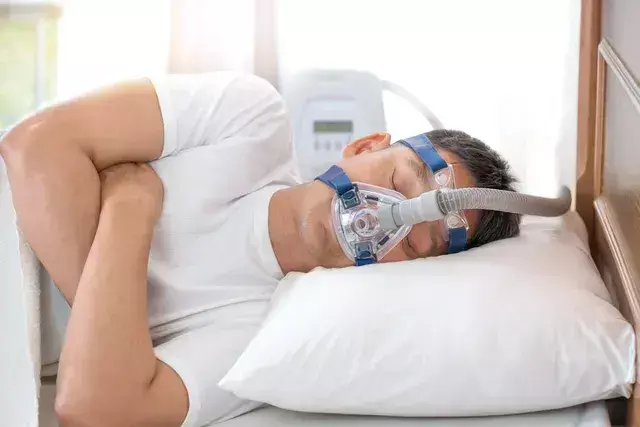- Home
- Medical news & Guidelines
- Anesthesiology
- Cardiology and CTVS
- Critical Care
- Dentistry
- Dermatology
- Diabetes and Endocrinology
- ENT
- Gastroenterology
- Medicine
- Nephrology
- Neurology
- Obstretics-Gynaecology
- Oncology
- Ophthalmology
- Orthopaedics
- Pediatrics-Neonatology
- Psychiatry
- Pulmonology
- Radiology
- Surgery
- Urology
- Laboratory Medicine
- Diet
- Nursing
- Paramedical
- Physiotherapy
- Health news
- Fact Check
- Bone Health Fact Check
- Brain Health Fact Check
- Cancer Related Fact Check
- Child Care Fact Check
- Dental and oral health fact check
- Diabetes and metabolic health fact check
- Diet and Nutrition Fact Check
- Eye and ENT Care Fact Check
- Fitness fact check
- Gut health fact check
- Heart health fact check
- Kidney health fact check
- Medical education fact check
- Men's health fact check
- Respiratory fact check
- Skin and hair care fact check
- Vaccine and Immunization fact check
- Women's health fact check
- AYUSH
- State News
- Andaman and Nicobar Islands
- Andhra Pradesh
- Arunachal Pradesh
- Assam
- Bihar
- Chandigarh
- Chattisgarh
- Dadra and Nagar Haveli
- Daman and Diu
- Delhi
- Goa
- Gujarat
- Haryana
- Himachal Pradesh
- Jammu & Kashmir
- Jharkhand
- Karnataka
- Kerala
- Ladakh
- Lakshadweep
- Madhya Pradesh
- Maharashtra
- Manipur
- Meghalaya
- Mizoram
- Nagaland
- Odisha
- Puducherry
- Punjab
- Rajasthan
- Sikkim
- Tamil Nadu
- Telangana
- Tripura
- Uttar Pradesh
- Uttrakhand
- West Bengal
- Medical Education
- Industry
CPAP Therapy Raises Intraocular Pressure, Study Cautions Glaucoma risk

Continuous positive airway pressure (CPAP) therapy, which is the most common treatment for obstructive sleep apnea (OSA), may significantly increase intraocular pressure (IOP) in the long term and reduce ocular perfusion pressure. This was reported in the findings of a recent study published in the Journal of Clinical Sleep Medicine conducted by Papan K. and colleagues in Thailand.
OSA is a very common condition and carries a multitude of systemic and ocular complications. CPAP remains the standard treatment, yet its effects on ocular health, especially concerning IOP and ocular perfusion pressure, are controversial. The current systematic review and meta-analysis was performed to evaluate these effects by analyzing data from 15 studies involving 495 participants.
The study used data from Ovid Medline and Embase databases, supplemented by manual bibliography searches. Abstract screening, followed by a review of eligible full-text articles, was independently performed. Any disagreements in study inclusion were resolved through group discussion. This systematic approach ensured a comprehensive and unbiased evaluation of CPAP therapy's impact on ocular parameters in OSA patients.
Results
Intraocular Pressure (IOP):
• The pooled mean IOP following CPAP therapy did not differ significantly from the baseline values (MD: 0.58 mmHg, 95% CI: -0.33 to 1.19).
• A subgroup analysis demonstrated a significantly higher IOP following in-lab positive airway pressure titration (MD: 4.28 mmHg, 95% CI: 0.91 to 7.66) and after long-term CPAP use (MD: 0.45 mmHg, 95% CI: 0.07 to 0.83).
Ocular Perfusion Pressure (OPP):
• OP under CPAP decreased considerably (MD: -2.15 mmHg, 95% CI: -3.50 to -0.80).
Retinal and Macular Thickness:
• Retinal nerve fiber layer thickness and macular layer thickness were not significant in pooled data.
Long-term CPAP therapy in OSA patients was associated with a significant increase in intraocular pressure and decrease in ocular perfusion pressure without affecting other ophthalmologic parameters. These results indicate that caution is necessary when using CPAP therapy in patients with glaucoma or at risk for increased IOP. Complete ophthalmologic assessment and monitoring should be an integral part of the management of such patients.
Reference:
Kongchan P, Banhiran W, Chirapapaisan N, Kasemsuk N. The effect of continuous positive airway pressure therapy on intraocular pressure in patients with OSA: a systematic review and meta-analysis. J Clin Sleep Med. 2025 Jan 16. doi: 10.5664/jcsm.11552. Epub ahead of print. PMID: 39815722.
Dr Riya Dave has completed dentistry from Gujarat University in 2022. She is a dentist and accomplished medical and scientific writer known for her commitment to bridging the gap between clinical expertise and accessible healthcare information. She has been actively involved in writing blogs related to health and wellness.
Dr Kamal Kant Kohli-MBBS, DTCD- a chest specialist with more than 30 years of practice and a flair for writing clinical articles, Dr Kamal Kant Kohli joined Medical Dialogues as a Chief Editor of Medical News. Besides writing articles, as an editor, he proofreads and verifies all the medical content published on Medical Dialogues including those coming from journals, studies,medical conferences,guidelines etc. Email: drkohli@medicaldialogues.in. Contact no. 011-43720751


